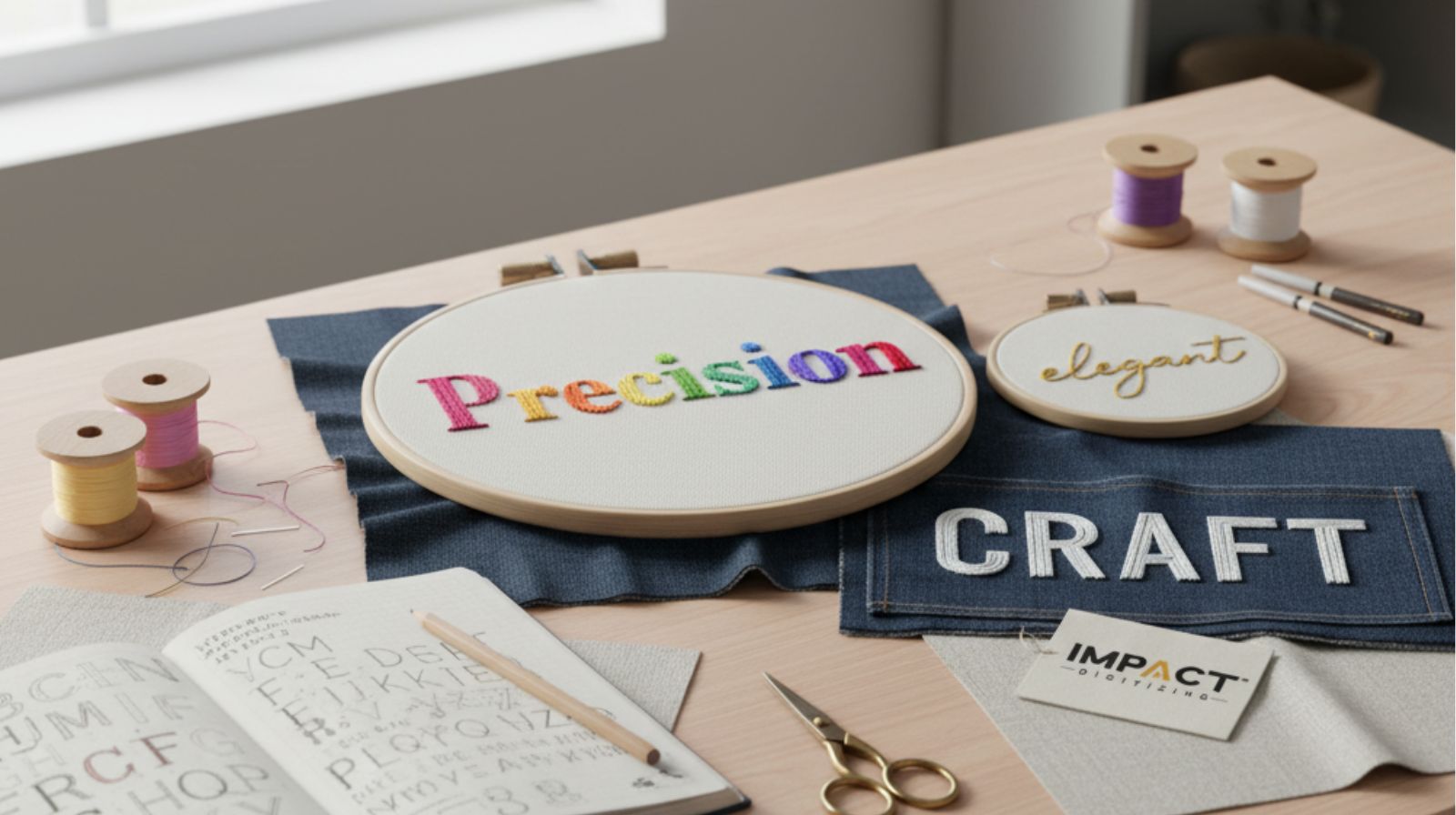Embroidery is a beautiful way to add personality and charm to any fabric. It’s a skill that lets you create something unique for clothing, accessories, or decor. However, when working with polyester, you’ll need a few extra steps to get it just right. This fabric’s smooth surface and moisture resistance make careful embroidery digitizing essential for great results. But with the right techniques, your designs will look amazing.
But don’t worry—this guide will walk you through everything you need to know to get it right!
Why Embroider on Polyester?
Polyester is a popular fabric because it’s tough, long-lasting, and resistant to wrinkles. These qualities make it perfect for everyday items like clothes and bags that go through frequent use. By embroidering on polyester, you can elevate these practical pieces into something stylish and personal. Plus, the fabric’s durability means your embroidery will hold up well over time.
Let’s break it down step by step!
Understanding Polyester Fabric
Polyester is a synthetic material known for its durability and resistance to shrinking or wrinkling. Unlike cotton, polyester doesn’t absorb moisture, affecing how embroidery threads sit on the fabric. Meanwhilethe smoothness of polyester can make stitching tricky. Despite these challenges, polyester is great for items that will be used and washed often.
1. Prepare the Fabric
Start with clean fabric for the best embroidery results. Wash the polyester using mild detergent to remove any chemicals or finishes. Don’t use the fabric softener, as it can leave residues that interfere with stitching. Let the fabric air dry or use low heat in the dryer to avoid shrinking or distorting.
2. Choose the Right Stabilizer
A stabilizer is your best friend when working with polyester. It keeps the fabric steady and prevents it from puckering or shifting during embroidery. Lightweight tear-away or cut-away stabilizers work perfectly for polyester. Secure the fabric and stabilizer tightly in the hoop, making sure there are no wrinkles or gaps. This firm base will help your embroidery look smooth and professional.
3. Pick the Perfect Needle
The needle you use can make or break your embroidery project. For polyester, a sharp embroidery needle is the best choice because it can pierce the fabric cleanly. Choose a needle size that matches the fabric and thread weight for a smooth, even stitching.
4. Use High-Quality Thread
Good thread makes all the difference. Polyester or rayon threads are excellent for embroidering polyester fabric because they’re durable and hold color well. Avoid metallic or heavy threads, as they can tear or cause the fabric to wrinkle.
5. Set Up Your Embroidery Machine
Before starting, adjust your embroidery machine to work with polyester. Lower the thread tension slightly to prevent puckering, and test your settings on a scrap piece of fabric. Choose designs with a lighter stitch density to avoid stressing the fabric.
6. Select the Right Design
Not all designs suit polyester. Choose something simple and not too dense to avoid stressing the fabric. Carefully position the design in the hoop to make sure it fits perfectly and looks polished once embroidered.
7. Perfect Your Stitching Technique
For polyester, shorter stitches work best to prevent thread breakage. Use simple stitches like satin or running stitch for clean results. Be sure to practice on a scrap piece before starting your actual design to ensure everything looks even and smooth.
8. Adjust the Thread Tension
Getting the right thread tension is important for smooth, even stitches. Since polyester is smooth, you may need to adjust your machine’s tension settings. Always test your settings on a spare piece of fabric before working on your main design.
9. Troubleshoot Issues
If you notice skipped stitches or puckering, don’t worry—it’s common. Check your needle size, stabilizer, and thread tension. Small adjustments can often fix the problem. Practicing on scraps can help you avoid mistakes on your final piece.
10. Finishing Touches
Once your embroidery is complete, carefully remove the excess stabilizer from the back of the fabric. Press the embroidered area on the wrong side using low heat to avoid damaging the stitches. Follow care instructions for polyester to keep your embroidery looking beautiful.
Some Creative Embroidery Ideas
Polyester fabric offers various creative possibilities. Why not try adding embroidery to jackets, bags, or even home decor like cushions and curtains? You can mix polyester with other fabrics like cotton or denim for extra texture. Or, how about experimenting with techniques like appliqué embroidery to make your designs truly unique?
Conclusion
Embroidering on polyester might take some patience, but the results are worth it. With these simple steps, you’ll be able to create stunning designs that last for years. So, grab your supplies, get inspired, and start stitching!
FAQ
1. Can I use polyester fabric for machine embroidery?
Yes, polyester fabric is great for machine embroidery because it’s durable and holds up well to stitching. Just make sure to use the right stabilizer and needle for the best results.
2. How can I wash embroidered polyester fabric without damaging the design?
Always wash polyester fabric inside out on a gentle cycle with mild detergent to protect your embroidered design. Avoid using bleach or harsh chemicals, and air-dry the fabric or use low heat in the dryer.
3. Can I use polyester fabric for embroidery on both sides?
Polyester fabric is typically smoother on one side, so it’s better to embroider on the front side for a cleaner result. However, if you want embroidery on both sides, make sure to use a suitable stabilizer to support both layers.
4. Do I need a special needle for embroidering on polyester?
Yes, it’s recommended to use a ballpoint or embroidery needle for polyester fabric. These needles have a rounded tip that helps prevent snags and ensures smooth stitching.
5. Can I embroider on polyester blends, or does it only work with pure polyester?
Polyester blends work well for embroidery too! Whether it’s a cotton-polyester blend or a spandex-polyester mix, you can still achieve great results. Just be mindful of the fabric’s texture and adjust your technique accordingly.









